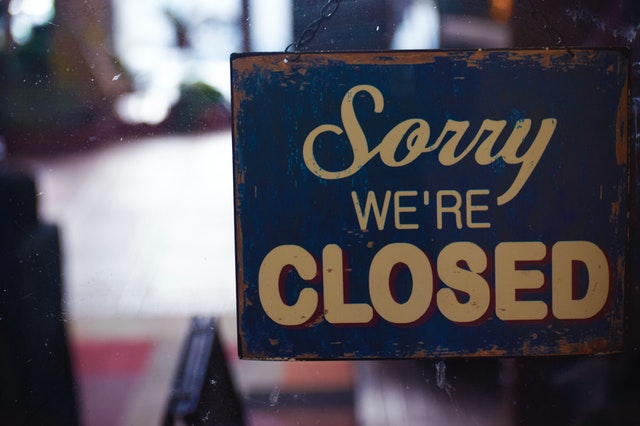Though vaccinations are speeding up in skilled nursing facilities across the country, visitation policies still rely on state and county guidance that hinges on the number of COVID-19 cases both in surrounding communities and inside nursing homes.
In turn, states and other local authorities will likely look toward Centers for Medicare and Medicaid Services (CMS) guidance as a blueprint for opening up visiting hours to families of patients.
In September, CMS indicated it only recommends reopening if the facility doesn’t have a staffing shortage, has adequate personal protective equipment supplies, and sufficient access to COVID-19 testing.
Prodigy Rehabilitation Group president Babak Amali noted that CMS also only recommends visitation if there have been no COVID-19 cases in a facility for 14 days.
“The bottom line would be to see a downward trend in the positive cases, with or without vaccination,” Amali said. “If you see the overall new cases are going down, especially in the skilled nursing facilities, you can expect some slight relief in visitation regulations. If we continue to see the spike in the positive numbers and the type of surge that we saw shortly after Thanksgiving and Christmas, chances are the current visitation restrictions will continue.”
The CMS rules emphasize the tightrope that officials across the country have walked since the federal government effectively shut down all non-emergency visits to nursing homes in March, one of the first and most drastic steps aimed at curbing the crisis.
While the 14-day restriction can be difficult to achieve, the goal of routine indoor visits became crucial as summer turned to fall and operators in the northern half of the country were forced to curb outdoor visits — a crucial lifeline in warmer weather.
“CMS understands that nursing home residents derive value from the physical, emotional, and spiritual support they receive through visitation from family and friends,” CMS official David Wright wrote in a September memo updating visitation guidelines. “In light of this, CMS is revising the guidance regarding visitation in nursing homes during the COVID-19 PHE [public health emergency].”
Susan Kayser, a partner at law firm Duane Morris LLP who specializes in aging care compliance law, said vaccination rollouts will likely impact how quickly visitations open back up. But unless vaccinations affect the number of cases, the immunizations alone won’t have make an impact.
For instance, some nursing facilities in Minnesota recently reopened for scheduled visits as the state closed in on completing the vaccination process by mid-January, the St. Paul Pioneer Press reported.
But state guidelines don’t hinge on vaccination numbers, but COVID-19 cases — and if a facility has been free of new cases for at least 14 days. The facility’s home county must have a positivity rate of less than 10%.
“It depends on in part on how quickly the vaccination programs rolled out, varying state to state; In New York, I think quite a few nursing homes are close to finishing them up,” Kayser said, adding that that, in turn, means that there may be less cases. “But in other states, they’re still waiting.”
In Virginia, however, health officials have said visitation isn’t likely to happen for some time because it’s still unclear whether the vaccine prevents spreading of COVID-19, and not just minimizing symptoms.
Darren Swenson, CEO of US Post-Acute Care, said he’s hoping visitation will start at facilities where his company’s physicians and advanced practice clinicians are working sometime during the summer.
“Since the immunization program just recently launched this month, there hasn’t been any new or additional guidance that we’ve seen,” Swenson said. “We’re hopeful that going into Q3, that we’ll see some relaxation. But that’s always dependent upon these other variants of COVID-19 and the effectiveness that immunization will bring us.”
A recent SNN survey of nursing home operators indicated that the vast majority of providers plan to wait for explicit, official word to reopen their doors to visitors, while half would require proof of vaccination for visitors once the shots become available to the wider public.
A facility’s size also plays a role in when a building can reopen: For Gurwin Jewish Health and Rehabilitation, a facility in the New York City suburbs with more than 1,200 residents and staff, the odds of successfully going the required length of time without COVID infections is low as long as overall community rates stay elevated.
“The way in which the formula exists now — and has been for many months — as long as we have just one case, whether it be staff or resident, just one, the clock gets reset in terms of visitation,” CEO Stuart Almer told SNN last month. “It’s mathematically very, very challenging to ever get to the goal that we can have someone visit.”
Residents and families, locked away from loved ones since March, may not understand why visitation isn’t starting again after most patients and staff receive vaccinations. In Florida, family members have complained in media reports that visitation still isn’t opening back up despite increased vaccinations in facilities.
A complete reopening of visitation will likely be slow to come, Kayser said, although the need is clearly there.
“It’s so desperately needed; it is just so sad that families have not been able to [visit] — it’s not good for the residents,” Kayser said. “So I hope that there will be quick and sensible efforts made by states to address the situation.”
Companies featured in this article:
Duane Morris LLP, Prodigy Rehabilitation Group, US Post Acute Care



